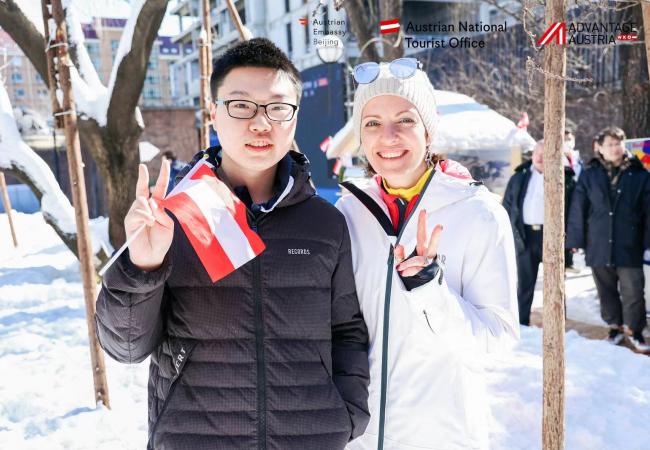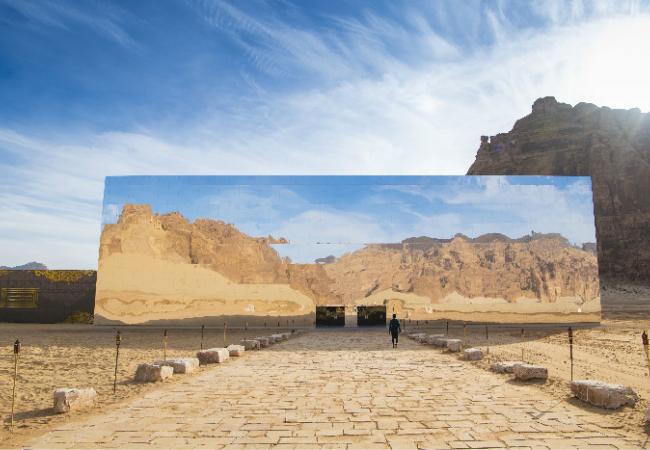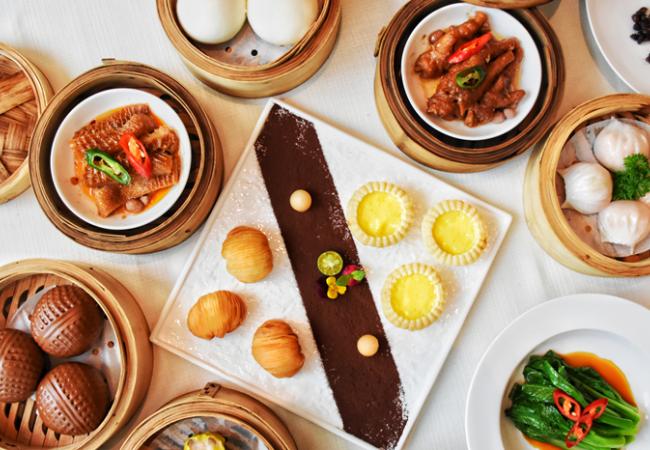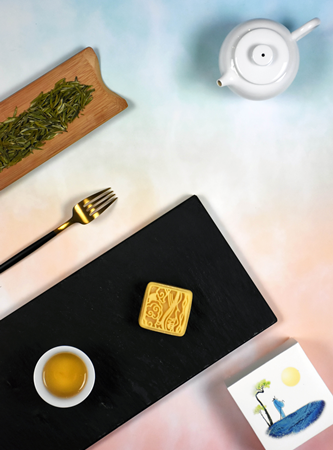2024年10月8日,西班牙,圣塞巴斯蒂安 (San Sebastian,Spain)。
他的前两道菜被评委们评为比人工智能生成的建议更高,而甜点在这两种情况下都没有给人留下深刻印象。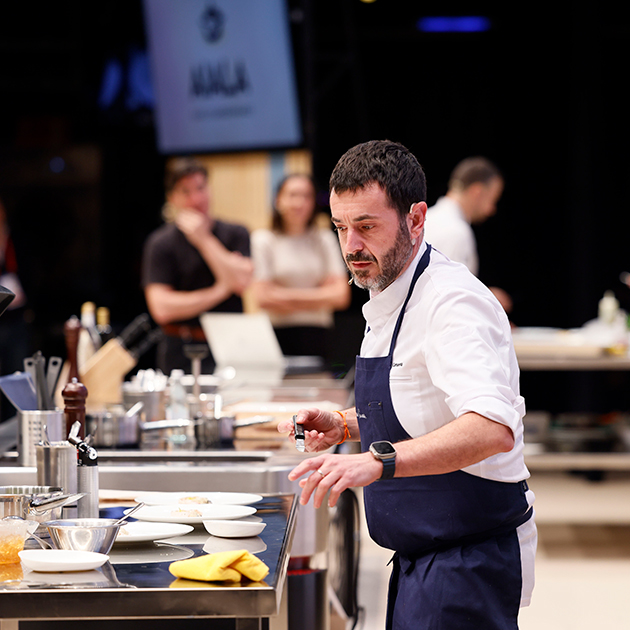

在这次挑战中,两个团队都有相同的规则、配料和指导方针来制作三道菜菜单:昨天在礼堂里由公众选择的五种配料的开胃菜,同样由大会参与者决定的两种技术的无须鳕菜,以及胡萝卜蛋糕的重新配方。
Ricard Camarena和他的团队与人工智能竞争。Alícia基金会厨师Daniel Barrionuevo执行了AI规定的分数;化学家Laia Badal和研究员兼物理学家Eneko Axpe提出了这些问题,并给出了这项技术的关键。记者Manuel Villanueva、JoséCarlos Capel和厨师Joan Roca是评估每道菜的人,他们不知道每道菜是谁做的。
作为开胃菜,两人都使用了公众选择的五种食材。卡马雷纳的建议是,用无花果和烤栗子做成的馅饼,配上炸金枪鱼肚片、油炸脱水土豆、金枪鱼和牡蛎果冻。人工智能食谱并没有太大不同:它有一个类似于土豆馅饼的基础,里面有无花果、烤栗子和醋,还有一个有金枪鱼肚和牡蛎的鞑靼,用盐、胡椒和牡蛎的水调味。
就无须鳕而言,人工智能要求他们将无须鳕加盐20分钟,晾干,然后用琵琶、Gernika辣椒、idiazabal和柠檬烤。Axpe解释说:“这是一个纯粹的巴斯克食谱,没有被问到。”就他而言,Camarena用凤尾鱼盐腌制了鳕鱼,做了一个非常柔软的软面包,用咖啡油,烤了半分钟的鳕鱼里脊和四分钟的kotkxa。
甜点,这些对胡萝卜蛋糕的重新诠释,完全相反:人工智能提出了一种胡萝卜,其质地为煮熟的胡萝卜奶油,只用水,直到达到所需的质地;经典的胡萝卜蛋糕海绵、胡萝卜液化明胶和经典的黄油奶油,以及胡萝卜片。Camarena颠倒了这一概念,更像是“胡萝卜”而不是“蛋糕”,有饼干慕斯、上釉胡萝卜、沥干的酸奶和咖啡油。
陪审团
在裁决过程中,陪审团成员进行了发言。陪审团发现,人工智能准备的前两道菜“虽然很好,但缺乏灵魂”。琼·罗卡说,开胃菜“可以忽略不计,因为鳕鱼煮过头了”。这些甜点不受欢迎,无论是因为它们的精华、胡萝卜蛋糕,还是因为这两种解构的结果。”AI看起来像一个狂欢节的作品,但Ricard的作品缺乏平衡。两者都失败了,卡佩尔说。
其中一个结论是,人工智能在高级烹饪中继续显示出其局限性,并且它还需要执行它的人进行一定程度的解释。Axpe解释说,这种经历“是炸弹,因为这是以前从未做过的事情。我们告诉机器,这是对Ricard Camarena的挑战,人工智能知道他是谁,它猜测这是2024年圣塞巴斯蒂安美食节的比赛,甚至询问了我们关于评审团及其起源的情况”。尽管失败了,Axpe的评估非常积极:“人工智能用这些菜把我吹走了。我能与Camarena竞争的事实对我来说似乎很残酷”。
尝试新的烹饪技巧
一种不需要加热烹饪的技术,可以产生新的味道和效果,具有前所未有的速度、可持续性和感官特征。Julen Baz(Garena*、Dima、Bizkaia)、安全系统专家Jon Sola和Eneko Axpe本人谈到了迄今为止已知最快的工具。
这个想法来自巴兹在农舍里的一座被闪电击中的雕像,这让阿克斯佩认为它可以用电击烹饪。他们尝试用电极烹饪香肠,但不起作用,所以他们改用烤架系统,食物是闭合电路的元件。一个原型已经用蔬菜、鱼和肉进行了测试,在意大利设计师卢卡·雨果的帮助下,他们对第一个原型进行了微调,该原型已经提交给专利局。
Axpe解释说:“食物会闭合电路,因此了解每种食物的电阻以确定电压非常重要。”他补充道:“我们可以在十秒钟内制作一公斤txuleta。”。就二氧化碳排放量而言,一个烤汉堡相当于用这种系统烹制的4500多个汉堡。
Ricard Camarena beats artificial intelligence
His first two dishes were rated higher by the judges than the AI-generated suggestions, while the desserts failed to impress in either case.
In this challenge, both teams had the same rules, ingredients and guidelines to create a three-course menu: a starter with five ingredients chosen by the public in the auditorium yesterday, a hake dish with two techniques, also decided by the congress participants, and a reformulation of a carrot cake.
Ricard Camarena and his team competed against artificial intelligence. Daniel Barrionuevo, chef of the Alícia Foundation, executed the score dictated by the AI; chemist Laia Badal and researcher and physicist Eneko Axpe asked the questions and gave the keys to this technology. Journalists Manuel Villanueva and José Carlos Capel and chef Joan Roca were the ones who evaluated each dish, without knowing who had prepared each recipe.
For the starter, both used the five ingredients chosen by the public. Tartar of figs and roasted chestnuts with slices of blowtorched tuna belly, fried and dehydrated potatoes and tuna and oyster jelly was Camarena's suggestion. The AI recipe was not too different: it has a base similar to the potato parmentier, with a release of figs, roasted chestnuts and vinegar, and a tartar with the tuna belly and oysters, seasoned with salt, pepper and the water from the oysters.
In the case of the hake, the AI has asked them to salt the hake for 20 minutes, dry it and roast it with piparras, Gernika peppers, idiazabal and lemon. A purely Basque recipe, without being asked," Axpe explained. For his part, Camarena cured the hake in anchovy salt, made a very soft sofrito, used a coffee oil, roasted the hake loin for half a minute and a kokotxa for four.
The desserts, these reinterpretations of carrot cake, were completely opposite: the AI proposed a carrot in textures with a boiled and pureed carrot cream, using only water until the desired texture was achieved; a classic carrot cake sponge, carrot liquefied gelatine and a classic butter cream, as well as carrot chips. Camarena reversed the concept, being more 'carrot' than 'cake', with a biscuit mousse, glazed carrots, drained yoghurt and coffee oil.
The jury
During the verdict, the members of the jury took the floor. The jury found that two of the first dishes, those prepared by the AI, 'lacked soul, although they were good'. The appetizers "could be passed over because the hake was overcooked," said Joan Roca. The desserts were not liked, either for their essence, the carrot cake, or for the results of both deconstructions. 'AI's looked like a carnival composition, but Ricard's lacked balance. Both failed,' said Capel.
One of the conclusions is that AI continues to show its limitations in haute cuisine, and that it also requires a certain amount of interpretation on the part of the person executing it. Axpe explained that this experience "was the bomb because it's something that's never been done before. We told the machine that it was a challenge against Ricard Camarena and the AI knows who he is, it guessed that it was for San Sebastian Gastronomika 2024 and even asked us about the jury and its origin'. Despite the defeat, Axpe's assessment is very positive: 'The AI has blown me away with these dishes. The fact that I can compete with Camarena seems brutal to me'.
Playing with new cooking techniques
A technique that does not require heat to cook and that produces new flavours and results, with speed, sustainability and organoleptic characteristics that have never been tested before. Julen Baz (Garena*, Dima, Bizkaia), security systems specialist Jon Sola and Eneko Axpe himself spoke about the fastest tool known to date.
The idea came from a statue Baz has in his farmhouse that had been struck by lightning, which made Axpe think it could be cooked with electric shocks. They tried cooking a sausage with electrodes, but it didn't work, so they switched to a griddle system, where the food is the element that closes the circuit. A prototype has already been tested with vegetables, fish and meat, and with the help of an Italian designer, Lucca Hugo, they have fine-tuned the first prototype, which has already been submitted to the patent office.
'The food closes the circuit, so it's important to know the resistance of each type of food to determine the voltage,' Axpe explains. 'We can make a one-kilo txuleta in ten seconds,' he added. One grilled hamburger is equivalent, in terms of CO2 emissions, to more than 4,500 burgers cooked with this system.





